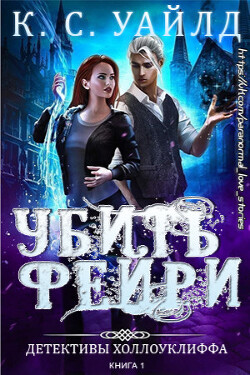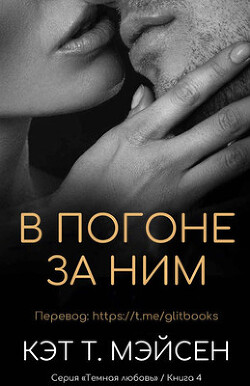Сборник статей - Россия и США: познавая друг друга. Сборник памяти академика Александра Александровича Фурсенко / Russia and the United States: perceiving each other. In Memory of the Academician Alexander A. Fursenko / Russia and the United States: perc

Помощь проекту
Россия и США: познавая друг друга. Сборник памяти академика Александра Александровича Фурсенко / Russia and the United States: perceiving each other. In Memory of the Academician Alexander A. Fursenko / Russia and the United States: perceiving each o... читать книгу онлайн
Alfred J. Rieber. Social and Political Fragmentation in Imperial Russia on the Eve of the First World War[217]
That the strains and trauma of the First World War contributed to the collapse of the tsarist monarchy is a truism that leaves unanswered several interrelated questions. Why did the collapse of old regime occur so suddenly in the capital and then spread so rapidly throughout the rest of the country; and why did it fail to generate any visible measure of support from its erstwhile defenders to restore it? Finally, why did Provisional Government collapse so rapidly in its turn, giving way to a complex smuta (civil strife) among multiple political contenders for power? This essay seeks to address these questions by examining the particular characteristics of change in the deep structures of imperial Russian society and politics in the decades leading up to 1914.
In the two centuries from Peter the Great to the First World War, the autocratic rulers and the ruling elites displayed a remarkable flexibility in responding to the foreign and domestic challenges to the security and stability of the state. In constructing a multi-cultural empire, they experimented in creative ways in attempting to assimilate newly conquered territories on the periphery of the center of their power. The great bursts of domestic reform under Catherine II, Alexander I and Alexander II were connected by a thin membrane of smaller changes and preparatory activities especially in the field of education of the social elites. Thus the process of reform was continuous, although its rhymes were irregular and the work as envisaged by the reformers often frustrated by entrenched interests. Nor did the innovations abolish existing institutions and long established practices. Instead they were accretions, increasingly weighing heavily on the body politic and social structure. Consequently, the process of state building was interrupted and incomplete to the very end of the old regime. It was due to the underdeveloped institutions of the empire and the arbitrary, centralized nature of the reforms combined with the limited resources of the autocracy to implement them that produced the effect of laying down of sedimentary strata, imposing new social and political forms on the old. At the same time, the pressures exerted by rapid economic change and the shock of military defeat in 1905 had the simultaneous and cumulative effect of intensifying fragmentation within these separate layers of society and state administration. By 1914 the social and political forces of the Empire were deeply divided and ill-prepared to withstand the trauma of modern war.
This essay seeks to explore four aspects of the layering of the archaic and the modern and the fragmentation of society and politics in the evolution of the Russian state and society as a consequence of the belated and uneven appearance in the course of Russian history of four great transformations experienced by all the major European powers during the previous century. The first of these was the industrial revolution and the formation of an integrated capitalist economy; the second was a political revolution which overturned absolutist rule in England, the Netherlands, France and much of the rest of Europe west of Prussia and the Habsburg lands by the mid nineteenth century; the third was the national state building project which culminated in the unification of the fragmented German and Italian states, the independence and fusion of Moldavia and Wallachia into a Rumanian state, the fusion of Eastern Rumelia with Bulgaria and the enlargement of Greece; the fourth was the rapid growth of urban society where intermediate social groupings, traditionally but misleadingly reified into the bourgeoisie and proletariat, challenged the political and cultural preeminence of the landed nobility.
Historians continue to debate the extent to which these transformations weakened or destroyed the institutions of the old regime throughout Europe. Arguably, every state retained pockets of “feudal survivals”. Industrialization began as a regional phenomenon and penetrated slowly from urban to remote rural and mountain areas; representative institutions and responsible ministries were slow to evolve toward liberal democracies; national integration proceeded gradually even in France. The landed nobilities of Europe continued to occupy high positions in government and commanded the armies of all the major powers; their social values and cultural standards continued to serve as models for much of the rest of society down to 1914. It might be said that every European state was following its “special path” (Sonderweg or особый путь). Or contrariwise, that all of them were “normal”. But that would be to bait a deadly historiographical trap. At a certain level of analysis, every European society was “special” and by 1914 all of them contained (and often shared) similar social, political and cultural features that might characterize them as normal. Moreover, the idea of a path carries teleological implications that should be resisted. The only solution to the problem lies in comparative history. But there is insufficient space for that in this paper. All that can be done is to assert and then attempt to document that the Russian Empire participated in all these four major transformations but that the rhythm of change was sufficiently different from the other major belligerent powers to help explain why it collapsed so suddenly in the midst of the war before its armies had been decisively defeated on the battlefield unlike what happened to the German, Habsburg and Ottoman Empires. This paper argues that four phenomena defined the peculiarities of Russia’s historical experience before 1914: 1) a multiplicity of social identifications; 2) the uneven and belated development of Russian capitalism; 3) the fragmentation and particularism of the big social aggregations; and 4) the fragmentation of politics.
The Multiplicity of Social IdentificationsEver since the reign of Peter I (“the Great”) the tsar and the ruler and his/her closest advisers had sought unsuccessfully to impose order from above on the variety of social identifications inherited from Muscovite Russia. Peter’s introduction of service ranking, Catherine’s attempt to create an intermediate urban class, Nicholas I belated codification of the soslovie system, the steps toward a common citizenship advanced by the reformers under Alexander II and again after the revolution of 1905 were, at best, only partial successes. From below people resisted or, as the large “floating” population testified, evaded the categories invented or imposed from above. Moreover, agents of autocracy often failed to implement or openly contradicted imperial legislation aimed at fixing the social order. Within the population there was abundant evidence of an insufficient awareness of one’s assigned place in society, a lack of self-consciously belonging to a group that was externally defined by its socio-economic condition (as a class) or its ethno-linguistic characteristics (as a nationality).
Конец ознакомительного фрагмента.
Текст предоставлен ООО «ЛитРес».
Прочитайте эту книгу целиком, купив полную легальную версию на ЛитРес.
Безопасно оплатить книгу можно банковской картой Visa, MasterCard, Maestro, со счета мобильного телефона, с платежного терминала, в салоне МТС или Связной, через PayPal, WebMoney, Яндекс.Деньги, QIWI Кошелек, бонусными картами или другим удобным Вам способом.
Примечания
1
Розенберг У. Г. А. А. Фурсенко и американская историография // Исторические записки. М., 2009. Вып. 12 (130). С. 11–24.
2
American Historical Review, 74:4 (April 1969), 1239.
3
American Historical Review, 72:1 (October 1966), 129–30.
4
Journal of American History, 73:2 (September 1986), 465.
5
American Historical Review, 93:4 (October 1988), 1013.
6
The title was taken from President Kennedy’s famous retort to those advising him to use force to resolve the crisis.
7
The Wilson Quarterly, 21:3 (Summer 1997), 90. A distinguished scholar revising the book in the leading American journal on foreign policy regarded it as the “most comprehensive narrative of this perilous moment yet to appear in print”. Foreign Affairs, 70:4 (July/August 1997), 142.
8
The New York Times, December 7, 1997.
9
This view had been reinforced just as A. A. was completing his work in a new book by the leading American diplomatic historian John L. Gaddis, We Now Know: Rethinking Cold War History (Oxford, 1997).
10
Первый том этого труда («Граф Румянцев и мир науки. По материалам неопубликованной переписки») уже находится в печати.
11
Россия и США: становление отношений (1765–1815). М., 1980. С. 638. (Благодарю С. А. Исаева за подсказку.)
12
Там же. См. также: Плешков В. Н. Российская наука и промышленность в «Дневниках» Джона Квинси Адамса. 1809–1814 // Русская наука в биографических очерках / Под ред. И. П. Медведева и Э. И. Колчинского. СПб., 2003. С. 325–340; Его же. Дж. К. Адамс в Петербурге // История Петербурга. 2005. № 6 (28). С. 55–59; Его же. Петербург в жизни и карьере Джона Квинси Адамса // Санкт-Петербург – Соединенные Штаты Америки. 200 лет российско-американских дипломатических отношений. СПб., 2009. С. 36–45. (Прим. ред.)
13
См.: Словарь американской истории с колониальных времен до Первой мировой войны / Под ред. А. А. Фурсенко. СПб., 1997. С. 516.
14
См. об этом: Медведев И. П. «Живой человек, а не памятник»: Несколько малоизвестных штрихов к биографии И. Ф. Крузенштерна // Петербургский исторический журнал. 2014. № 3. С. 18–23.
15
Имеется в виду Венедикт Венедиктович Крамер, один из директоров Главного правления РАК с 1807 по 1823 г.
16
ПФА РАН. Ф. 88. Оп. 2. Д. 115. Л. 145 (Оригинал – на французском языке).
17
Статья, заново отредактированная для этого сборника, впервые была опубликована в «Журнале друзей Санкт-Петербургской классической гимназии»: Абарис. № 9. 2008. С. 60 (с портретом А. А. Фурсенко)).
18
Я не полагаюсь исключительно на свою память, а опираюсь на разнообразные записи, сделанные в те годы в процессе работы и отложившиеся в моем личном архиве.
19
Ю. А. Тарантов, доктор физико-математических наук, работал тогда в Научно-исследовательском институте химии при СПбГУ.
20
Памфлет «Новое здание, или Жизнь и смерть учреждений».
21
О роли А. В. Лушникова в реформировании системы управления железнодорожным транспортом см.: Гурьев А. Из тупика. История одной реформы. СПб., 2008. С. 629, 642–643, 720–724.
22
Недавно он в соавторстве выпустил капитальное сочинение: Козлов-Струтинский С. Г., Парфентьев П. А. История Католической церкви в России. СПб., 2014.
23
См. его книгу: Парфентьев П. А. Эхо благой вести: христианские мотивы в творчестве Дж. Р. Р. Толкина. М., 2004.
24
См.: Парфентьев П. А. Без школы: юридический путеводитель по семейному образованию и экстернату. М., 2011.
25
См.: http://www.dimitrysmirnov.ru/blog/cerkov-18733/
26
Fursenko A. A. Dreams and Realities of Present-Day Russia // Russia in the Contemporary World. Proceedings of the First Symposium in South Africa Centre for Russian Studies, University of Cape Town. 17–19 August, 1994. Ed. by Apollon Davidson and Irina Filatova. Cape Town: Centre for Russian Studies, University of Cape Town, and the Marvol Foundation, 1995. P. 15. Экземпляр кейптаунского доклада А. А. Фурсенко любезно предоставлен авторам академиком А. Б. Давидсоном.
27
См.: Дзарасов Р. С. Экономика «насаждения отсталости». К действительным причинам реформирования РАН // Вестник РАН. 2014. Т. 84. № 4. Апрель. С. 291–303.
28
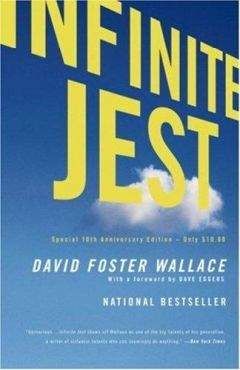

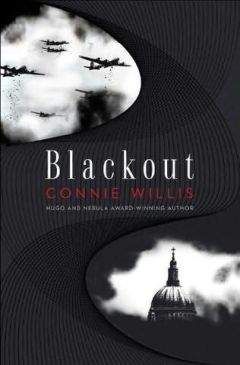
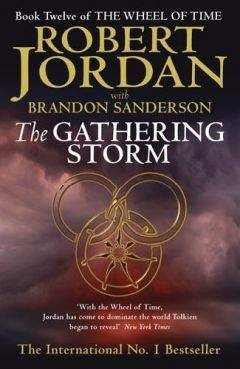
![Rick Page - Make Winning a Habit [с таблицами]](/uploads/posts/books/no-image.jpg)










